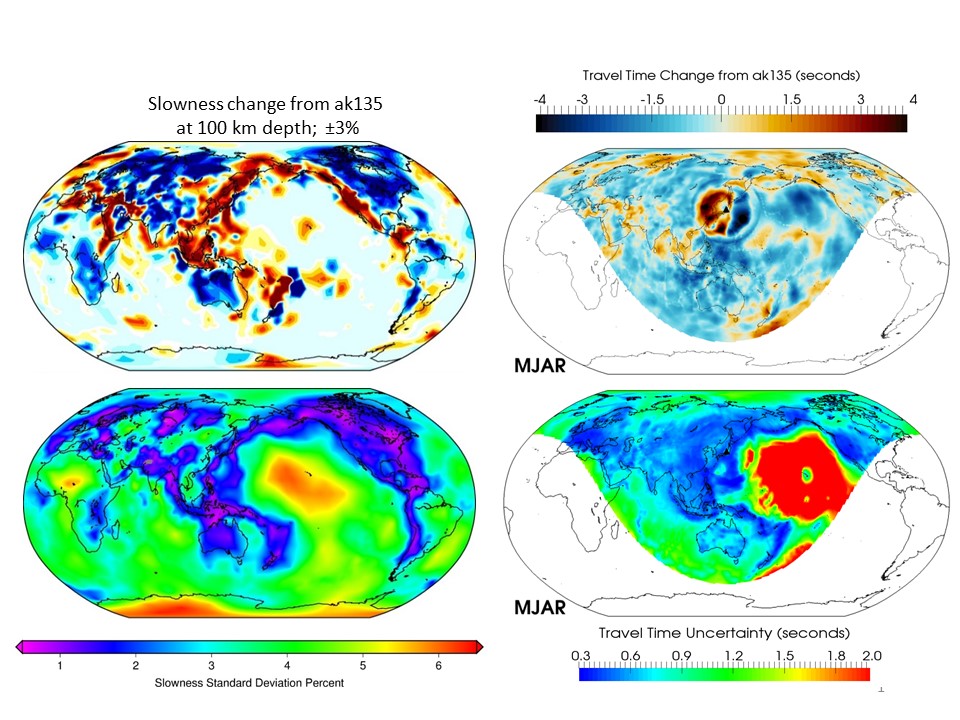
The SALSA3D–SAndia and LoS Alamos 3D seismic tomography model–was created to locate suspected explosions as accurately and precisely as possible. During computation of this tomographic model of the compressional wave slowness in the Earth’s mantle our primary focus was on ensuring the accuracy and precision of travel-time predictions for P and Pn ray paths. Path-dependent travel-time prediction uncertainties are obtained by computing the full 3D model covariance matrix and then integrating slowness variance and covariance along ray paths from source to receiver. Path-dependent travel-time prediction uncertainties reflect the amount of seismic data that was used in tomography with very low values for paths represented by abundant data in the tomographic data set and very high values for paths through portions of the model that were poorly sampled by the tomography data set. The pattern of travel-time prediction uncertainty is a direct result of the off-diagonal terms of the model covariance matrix and underscores the importance of incorporating the full model covariance matrix in the determination of travel-time prediction uncertainty. The computed pattern of uncertainty differs significantly from that of 1D distance-dependent traveltime uncertainties computed using traditional methods, which are only appropriate for use with travel times computed through 1D velocity models.
SAND2021-12933 W